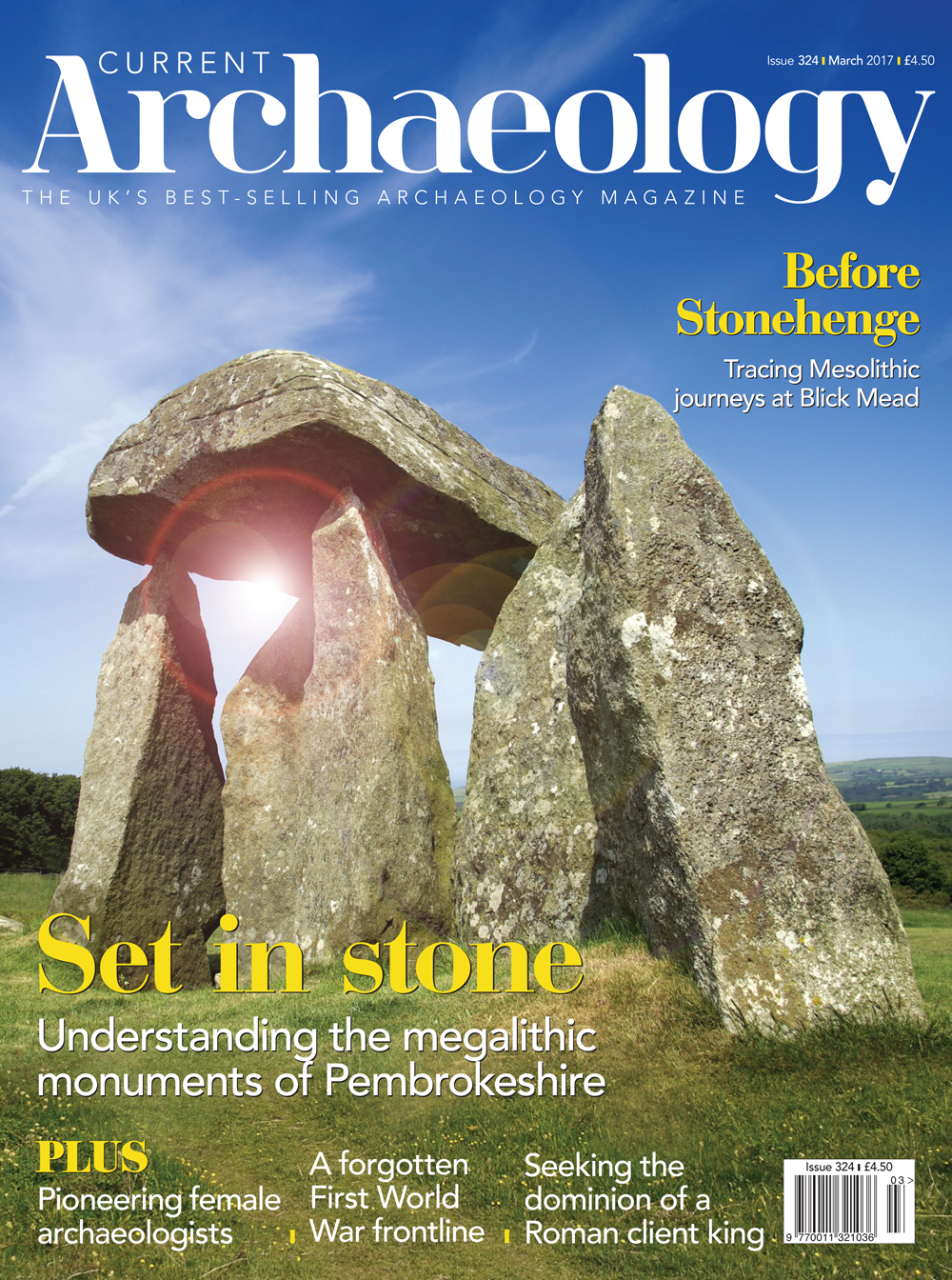How should we study ancient stone monuments? In the past, great ingenuity has been expended oncataloguing them according to ever more intricatetypologies. Now a survey of Neolithic monumentsin Pembrokeshire is applying simpler classificationsand focusing on what these edifices meant to thecommunities that raised them. The results raisequestions about how efforts to clear the first farmingland were commemorated, and whether we can detecta prehistoric desire to keep up with the neighbours.
At Blick Mead, it is understanding the meaning of journeys that is under thespotlight. This remarkable Mesolithic meeting place was established tantalisinglyclose to the later site of Stonehenge. An unprecedented sequence of radiocarbon datesindicates activity from the 8th to the 4th millennium BC, while a dog tooth suggests that visitors may have been drawn from as far afield as the Vale of York.
The First World War brought more unwelcome visitors to the British coast. Enemy submarines took a terrible toll on shipping, while aircraft offered new ways to strengthen or evade coastal defences. We take a look at a project recording theeroding relics of a forgotten frontline before they are lost forever.
Time has long since obliterated any markers tracing out the territory of the Roman client king Cogidubnus – or so it would seem.An attempt to trace the borders of his domain using Long-Distance Alignments has yielded some surprising results.
Finally, we salute the pioneering work undertaken by female archaeologists.
Matt Symonds
/n
IN THIS ISSUE:/n
FEATURES/n
BLICK MEAD/n
Exploring the ‘first place’ in the Stonehenge landscape
Ongoing excavations at Blick Mead have unearthedan impressive array of evidence of the site’s use in theMesolithic and Neolithic periods. What can the latestfinds from this ancient spring tell us about the originsof a ritual landscape?
CITiZAN GOES TO WAR/n
Britain’s coastal frontline: 1914-1918
What traces of the First World War are there onBritain’s shores? We explore the coastal archaeologyof a forgotten frontline.
HEATHERY LIVROCKY LAND/n
Rethinking the stones ofNeolithic Pembrokeshire
Should archaeologists start thinking less aboutmonument typologies to understand how peopleviewed rocks and the landscape in the past? We take alook at new approaches to the meanings of the stones of Neolithic Pembrokeshire.
TIBERIUS CLAUDIUS COGIDUBNUS/n
Defining the dominions ofthe Great King
We examine how the Long-Distance Alignmentsof Roman roads are shaping our knowledgeof the borders marking out the territory of the ‘Great King of the Britons’, client king Cogidubnus.
TROWELBLAZERS/n
Raising our trowels to pioneeringwomen archaeologists
A new touring exhibition celebrating womenarchaeologists past and present is about to open.Who were some of the earlier female figureswho made an impact on the subject, and howwere they connected?
NEWS/n
Rare rural plague burial found at Thornton Abbey;Britain’s earliest monastery at Beckery?; Jam yesterday:West End preserves jars; Chester’s Roman gate;Neanderthals in Jersey; Life and death at GloucesterCathedral; The Shropshire piano hoard; New Treasurereport launched; Roman tools on display; Finds tray
REGULARS/n
Comment
Joe Flatman excavates the CA archive
Context
Using drones to investigate Roman Northamptonshire
Reviews
The Rural Settlement of Roman Britain; The Birthof Industrial Glasgow; The Mildenhall Treasure;Romano-British Settlement and Cemeteries at Mucking; Treasures of Roman Lincolnshire; LostLandscapes of Palaeolithic Britain
Museum
A look at Norton Priory’s new museum
Conference
Current Archaeology Live!2017 is just around thecorner. This special section brings you the latestdetails, including information about our bonus activityand a reminder of how to book.
Sherds
Chris Catling’s irreverent take onheritage issues
Odd Socs
The Carriage Foundation
/n

